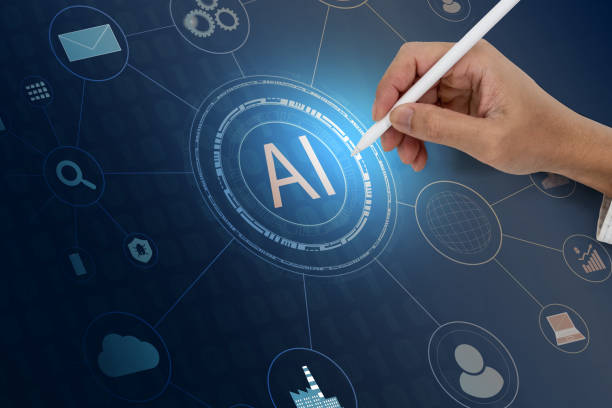Introduction to the Concept of AI Robots and Their Applications
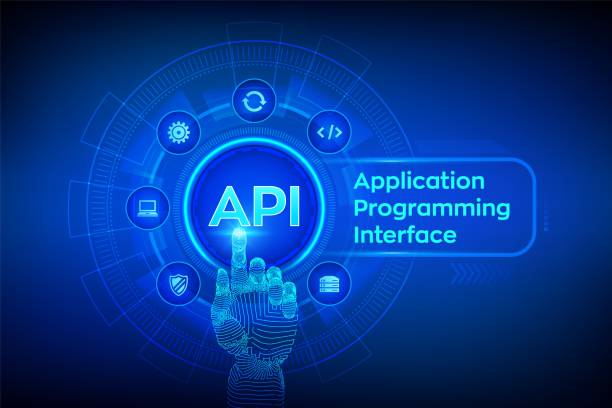
AI robots are an emerging phenomenon in the field of technology, combining the two separate fields of robotics and artificial intelligence to enable the creation of intelligent and automated machines.
These #robots are capable of analyzing data, learning from experiences, and making independent decisions, performing tasks that previously could only be done by humans.
In fact, an AI robot is not just a physical machine, but an intelligent system that can interact with its surroundings and act accordingly.
The applications of this technology are vast, with significant impacts ranging from industry and medicine to customer service and finance.
Artificial intelligence gives these robots the power to make decisions and solve problems, while robotics provides the ability to execute these decisions in the real world.
One of the most important aspects of an AI robot is its machine learning ability.
This means that the robot can analyze data, identify patterns and relationships within it, and improve its performance over time.
For example, an AI robot used in a factory production line can automatically make the necessary adjustments by examining data related to product quality and the production process to reduce errors.
This learning capability makes AI robots a powerful tool for increasing productivity and reducing costs.
In summary, an AI robot is a combination of robotic hardware and artificial intelligence software that allows it to perform various tasks automatically and intelligently.
This technology is evolving, and it is expected to play a much more important role in our lives in the future.
Potential applications of AI robots include the development of self-driving cars, the provision of remote medical services, and the smart management of cities.
Are you worried that your company’s old website is scaring away new customers? Rasaweb solves this problem with a modern and efficient corporate website design.
✅ Increases your brand’s credibility.
✅ Helps to attract targeted customers.
⚡ Contact Rasaweb for a free consultation!
Complete Explanation of the Main Components of an AI Robot
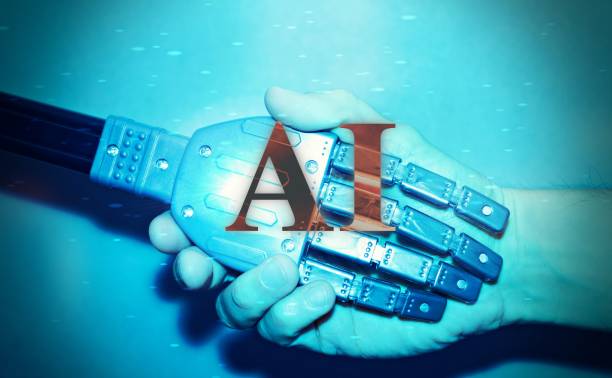
An AI robot consists of various components, each playing a specific role in its overall function.
These components include sensors, actuators, central processor, and artificial intelligence software.
Sensors are responsible for collecting information from the surrounding environment.
This information can include images, sounds, temperature, pressure, and other sensory data.
Actuators are responsible for performing actions in the real world.
This action can include movement, grabbing objects, changing temperature, and other physical actions.
The central processor is the thinking brain of the AI robot, responsible for processing information received from the sensors and making decisions about the necessary actions.
Artificial intelligence software is the most important part of an AI robot and is responsible for providing it with intelligence and decision-making capabilities.
This software can include machine learning algorithms, neural networks, and other artificial intelligence techniques.
Artificial intelligence software enables the AI robot to learn from its experiences and improve its performance over time.
In general, the main components of an AI robot work together in this way: sensors collect information, the central processor processes this information and decides what action should be taken, and the actuators perform this action in the real world.
Artificial intelligence software also helps the central processor to make smarter decisions.
Ultimately, the interaction of these components enables the AI robot to perform complex tasks automatically and with high precision.
The correct selection of each of these components and the appropriate coordination between them plays a crucial role in the overall performance of the AI robot.
Examining the Types of AI Robots in Terms of Application and Structure
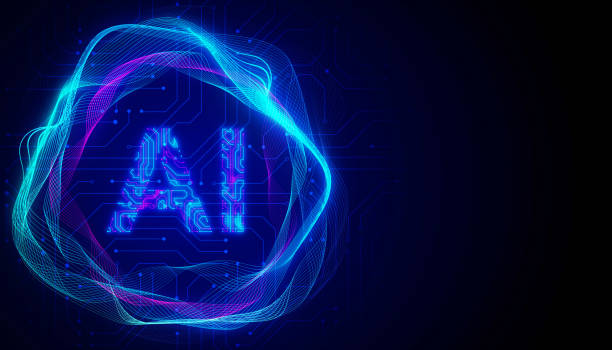
AI robots can be classified into various types based on their application and structure.
In terms of application, AI robots can be used in various industries such as manufacturing, healthcare, customer service, and agriculture.
In terms of structure, AI robots can be designed and manufactured as industrial robots, humanoid robots, flying robots, and underwater robots.
Industrial robots are typically used to perform repetitive and heavy tasks on production lines.
These robots usually have robotic arms that can move objects with high precision and perform various operations.
Humanoid robots are designed to resemble humans and can perform tasks that require interaction with humans.
These robots usually have a face, hands, and feet and can understand their surroundings using various sensors.
Flying robots are typically used to perform tasks such as aerial imaging, inspecting power transmission lines, and traffic control.
These robots usually have fixed or rotary wings and can fly automatically and land when needed.
Underwater robots are typically used to perform tasks such as exploring underwater mines, inspecting oil and gas pipelines, and collecting oceanographic data.
These robots usually have a body that is resistant to water pressure and can move automatically underwater.
Here are two tables to show the types of AI robots:
| Robot Type | Application | Features |
|---|---|---|
| Industrial Robot | Production line, moving objects | Robotic arms, high precision |
| Humanoid Robot | Interaction with humans, customer service | Human-like, various sensors |
| Flying Robot | Aerial imaging, inspection | Fixed/rotary wing, automatic flight |
| Underwater Robot | Mining exploration, pipeline inspection | Pressure resistant, underwater movement |
This variety in the types of AI robots demonstrates the high potential of this technology to solve various problems in different fields.
The Role of Machine Learning in the Development of Smart Robots
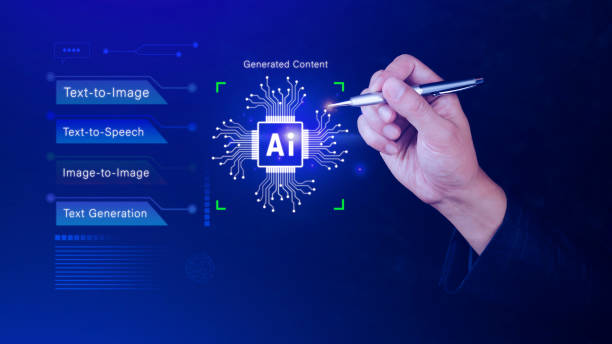
Machine learning plays a very important role in the development of AI robots.
Machine learning enables AI robots to learn from their experiences and improve their performance over time.
This is particularly important in cases where tasks are complex and unpredictable.
For example, an AI robot designed for self-driving needs to be able to identify traffic patterns and make appropriate decisions about how to drive using machine learning.
There are various machine learning algorithms that can be used in the development of AI robots.
Some of these algorithms include reinforcement learning, supervised learning, and unsupervised learning.
Reinforcement learning enables AI robots to learn desired behaviors by receiving rewards and penalties and avoid undesirable behaviors.
Supervised learning enables AI robots to identify patterns in the data and make accurate predictions using labeled data.
Unsupervised learning enables AI robots to identify hidden patterns in the data and understand the structure of the data using unlabeled data.
Using machine learning, AI robots can continuously improve their performance and achieve a higher level of intelligence.
This is especially important in cases where the environment around the AI robot is changing.
For example, an AI robot working in a warehouse needs to be able to automatically change its path and reach its goals by changing the layout of the warehouse.
Ultimately, machine learning enables AI robots to become intelligent and automated systems that can perform complex tasks independently.
This plays a very important role in the development of AI robots and the expansion of their applications in various industries.
Are you tired of your online store not generating as much revenue as its potential? Rasaweb, specializing in professional online store website design, solves this problem forever!
✅ Increased sales and revenue rates
✅ Fast loading speed and excellent user experience
⚡ Get a free online store website design consultation
Examining the Challenges and Opportunities Facing the Development of AI Robots
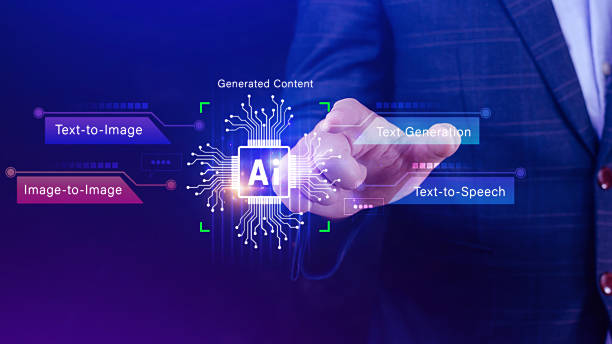
The development of AI robots faces various challenges and opportunities.
One of the most important challenges is the high cost of developing and maintaining AI robots.
AI robots are usually made up of expensive and complex parts and require high expertise for design, construction, and maintenance.
Another challenge is the ethical issues related to the use of AI robots.
For example, the question arises as to whether AI robots should have specific rights and responsibilities, and if an AI robot makes a mistake, who will be responsible?
In addition to the challenges, there are also many opportunities in the development of AI robots.
One of the most important opportunities is increasing productivity and reducing costs in various industries.
AI robots can automatically perform repetitive and dangerous tasks, thereby increasing productivity and reducing costs.
Another opportunity is providing better services to customers.
AI robots can answer customer questions around the clock and help them solve their problems.
In general, the development of AI robots is accompanied by various challenges and opportunities.
To succeed in this field, it is necessary to understand these challenges well and make the best use of the opportunities.
Also, we must pay attention to the ethical issues related to the use of AI robots and find appropriate solutions for them.
The future of AI robots is bright, and this technology is expected to play a much more important role in our lives in the future.
With the development of AI robots, we can achieve a smarter, safer, and more efficient world.
For example, AI robots can help us manage energy resources, reduce air pollution, and improve the quality of life.
Case Study: Applications of AI Robots in Industry
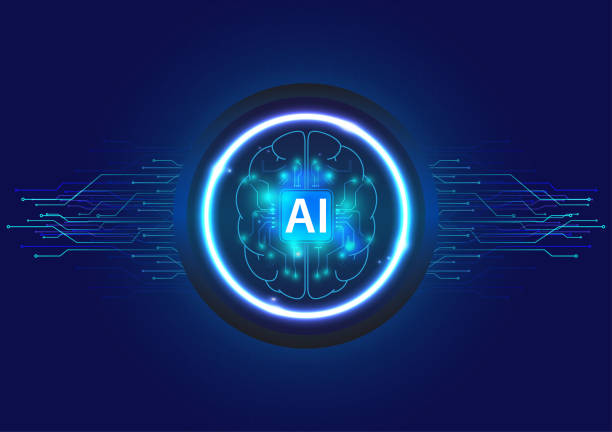
Industry is one of the areas where AI robots have very wide applications.
AI robots can be used in production lines, warehousing, quality control, and other industrial sectors.
In production lines, AI robots can automatically perform repetitive and heavy tasks, thereby increasing productivity and reducing costs.
For example, an AI robot can accurately assemble various parts or package products.
In warehousing, AI robots can automatically move goods, thereby increasing the speed and accuracy of warehousing.
For example, an AI robot can pick up goods from shelves and transfer them to the loading area.
In quality control, AI robots can accurately check products and identify their defects.
For example, an AI robot can check product images and detect defects in them.
One of the most important advantages of using AI robots in industry is increased safety.
AI robots can automatically perform dangerous tasks, thereby reducing the risk of worker injuries.
For example, an AI robot can work in polluted environments or at high altitudes.
In addition, AI robots can work around the clock, thereby reducing production time and increasing production capacity.
Ultimately, the use of AI robots in industry can lead to reduced costs and increased profitability.
By increasing productivity and reducing costs, companies can offer their products at lower prices to the market and increase their market share.
Also, by increasing the quality of products, companies can increase the satisfaction of their customers and strengthen their brand.
What Scenarios Will the Future of Robotics and Artificial Intelligence Create?
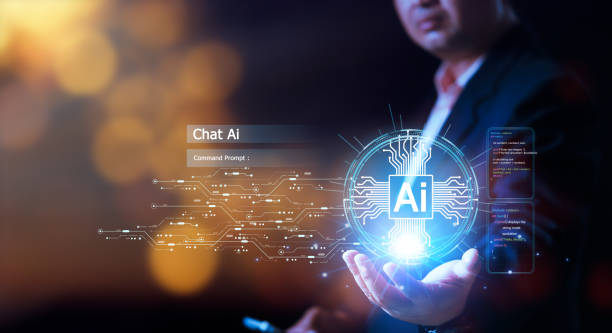
The future of robotics and artificial intelligence is full of exciting and challenging scenarios.
With the increasing progress of these two technologies, AI robots are expected to play a much more important role in our lives.
In the future, AI robots can be used in various fields such as healthcare, education, transportation, and customer service.
In the field of healthcare, AI robots can help doctors diagnose diseases and provide appropriate treatments.
For example, an AI robot can check medical images and identify the symptoms of diseases.
Also, AI robots can help nurses care for patients.
For example, an AI robot can deliver patients’ medications and monitor their vital signs.
In the field of education, AI robots can help teachers provide personalized education.
For example, an AI robot can identify the learning needs of each student and provide educational content based on them.
In the field of transportation, AI robots can help drivers with self-driving.
For example, an AI robot can guide the vehicle in its path and prevent collisions with obstacles.
In the field of customer service, AI robots can help customers answer their questions and solve their problems.
For example, an AI robot can answer customer questions around the clock and help them find the products they are looking for.
However, the development of AI robots is also accompanied by ethical challenges.
For example, the question arises as to whether AI robots should have specific rights and responsibilities, and if an AI robot makes a mistake, who will be responsible? To solve these challenges, it is necessary to establish appropriate laws and regulations for the use of AI robots.
The future of AI robots is bright, and this technology is expected to play a much more important role in our lives in the future.
With the development of AI robots, we can achieve a smarter, safer, and more efficient world.
Examining the Impact of AI Robots on the Labor Market
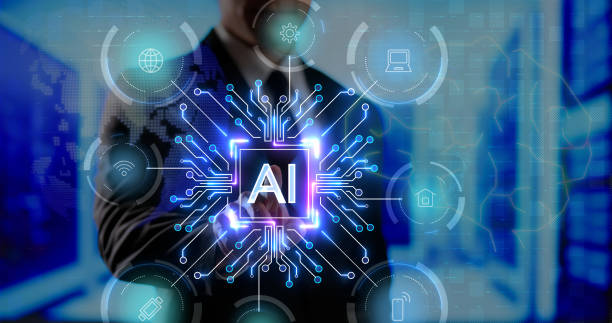
The impact of AI robots on the labor market is a controversial topic.
On the one hand, some experts believe that AI robots can cause the loss of many jobs.
They argue that AI robots can automatically perform repetitive and simple tasks, thereby reducing the need for human labor.
On the other hand, some other experts believe that AI robots can create new jobs.
They argue that the development and maintenance of AI robots requires a skilled workforce, thereby creating new jobs in fields such as programming, robotics engineering, and data analysis.
Studies show that the impact of AI robots on the labor market is complex and multifaceted.
Some jobs may be at risk of being lost, while others may be strengthened or new jobs may be created.
In general, jobs that require repetitive and simple skills are more at risk of being lost.
In contrast, jobs that require complex and creative skills are less at risk or may even be strengthened.
For example, an AI robot can automatically enter data into the system, but it cannot perform complex analyses or find creative solutions to problems.
To reduce the negative effects of AI robots on the labor market, it is necessary to train the human workforce for new jobs.
Also, it is necessary to consider appropriate support policies for people who lose their jobs.
By taking these measures, we can benefit from the advantages of AI robots and at the same time reduce their negative effects on the labor market.
| Impact | Description | Example |
|---|---|---|
| Job Loss | Automation of repetitive tasks | Production line worker |
| Job Creation | Development, maintenance, and management of robots | Robotics engineer |
| Job Strengthening | Need for complex and creative skills | Data analyst |
Ultimately, the impact of AI robots on the labor market depends on how this technology is managed and used.
By adopting a responsible and forward-looking approach, we can benefit from the advantages of AI robots and at the same time prevent harm to the human workforce.
Are you falling behind in competition with large online stores?
Rasaweb, with professional online store website design, brings your business online and increases your market share!
✅ Increased brand credibility and customer trust
✅ Easy shopping experience leads to more sales
⚡ Take action now to receive a free website design consultation!
Examining the Ethical Dimensions of Using AI Robots
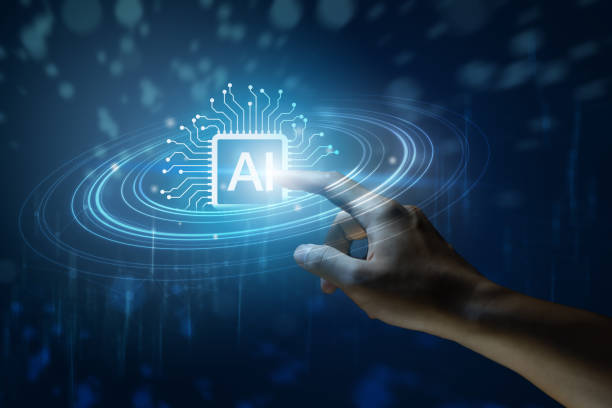
The use of AI robots brings with it several ethical dimensions that must be addressed.
One of the most important of these dimensions is accountability.
If an AI robot makes a mistake, who will be responsible? Will the manufacturer of the AI robot, the user of the AI robot, or the AI robot itself be responsible? To solve this problem, it is necessary to establish appropriate laws and regulations to determine responsibility for the actions of AI robots.
Another ethical dimension is privacy.
AI robots usually collect a lot of information about their users.
This information can include personal information, financial information, and health information.
To protect the privacy of users, it is necessary to take appropriate security measures to protect this information.
Also, it is necessary to establish appropriate laws and regulations to limit the collection and use of personal information by AI robots.
A third ethical dimension is discrimination.
AI robots can make discriminatory decisions based on algorithms that have been trained on discriminatory data.
To prevent discrimination, it is necessary to use non-discriminatory data to train AI robots.
Also, the algorithms of AI robots need to be regularly reviewed to ensure that there is no discrimination in them.
Finally, the use of AI robots can create social inequalities.
AI robots can cause the loss of low-skilled jobs and thereby increase economic inequalities.
To reduce these inequalities, it is necessary to consider appropriate support policies for people who lose their jobs.
Also, appropriate educational opportunities should be provided for low-skilled people so that they can acquire the skills needed for new jobs.
Guide to Buying the Right AI Robot
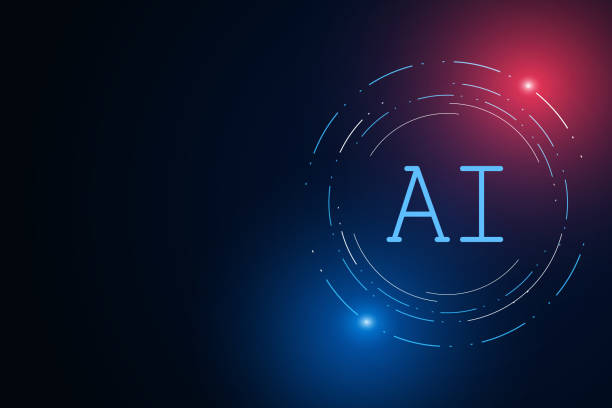
Buying the right AI robot requires careful consideration of needs and available resources.
Before buying, you should answer the question of what you want to use the AI robot for? Do you want to use it in industry, healthcare, customer service, or other fields? After determining the application of the AI robot, you should review its technical specifications.
Important technical specifications include processor, memory, sensors, and actuators.
The processor is the thinking brain of the AI robot and should have enough power to process information.
Memory is the location where information is stored and should have enough capacity to store the required information.
Sensors are responsible for collecting information from the surrounding environment and should have enough accuracy to collect information.
Actuators are responsible for performing actions in the real world and should have enough power to perform the desired action.
In addition to technical specifications, you should also pay attention to the price of the AI robot.
The price of an AI robot depends on various factors such as technical specifications, brand, and additional features.
Before buying, check the price of the AI robot from several different vendors and then choose the best option.
Also, before buying an AI robot, make sure that the vendor provides after-sales service.
After-sales service includes training, repair, and maintenance.
By providing after-sales service, you can ensure the correct performance of your AI robot and, in case of a problem, benefit from the vendor’s support services.
Finally, before buying an AI robot, read other users’ reviews of the AI robot you are considering.
Other users’ reviews can help you choose the right AI robot.
By reading other users’ reviews, you can become aware of the advantages and disadvantages of the AI robot you are considering and make a better decision.
Frequently Asked Questions
| Question | Answer |
|---|---|
| What is an AI robot? | An AI Robot is a machine capable of understanding its environment, reasoning, learning, and making decisions to perform tasks independently. |
| What is the difference between regular robots and AI robots? | Regular robots perform repetitive tasks based on prior programming, while AI robots can learn from experience, interact dynamically with their environment, and even behave in ways that resemble human intelligence. |
| What are the main applications of AI robots? | They are used in industries (manufacturing, assembly), medicine (surgery, diagnosis), services (customer support, domestic), exploration (space, underwater) and many other fields. |
| What technologies are used in the construction of AI robots? | Machine Learning, Computer Vision, Natural Language Processing, Deep Learning, and Robotics are among the key technologies. |
| Can AI robots have emotions? | Currently, robots do not have emotions in the human sense. They can identify and react to emotions, but they do not experience emotions themselves. |
| What are the main challenges in developing AI robots? | Safety, reliability, ethics, autonomy, adaptation to complex environments, and natural interaction with humans are important challenges. |
| How are AI robots trained? | They are usually trained using large amounts of data, machine learning algorithms, and deep learning to identify patterns and make decisions. |
| Examples of AI robots in everyday life? | Smart robotic vacuum cleaners, customer support chat robots, self-driving cars, and surgical robots in hospitals. |
| Are AI robots a threat to human jobs? | Some repetitive jobs may be automated, but at the same time, robots can increase productivity and create new jobs in the development, maintenance, and supervision of these systems. |
| How is the future of AI robots predicted? | They are expected to become smarter, more autonomous, and capable of performing more complex tasks, and to be in closer interaction with humans in various environments. |
And other services of Rasa Web advertising agency in the field of advertising
Smart UI/UX: A fast and efficient solution for analyzing customer behavior with a focus on Google Ads management.
Smart advertising campaign: Transform customer acquisition by helping to optimize key pages.
Smart advertising campaign: A fast and efficient solution for customer acquisition with a focus on Google Ads management.
Smart link building: A creative platform to improve SEO ranking with an attractive user interface design.
Smart conversion rate optimization: A creative platform to improve click-through rate with custom programming.
And more than hundreds of other services in the field of internet advertising, advertising consulting and organizational solutions
Internet Advertising | Advertising Strategy | Advertorial Report
Resources
Will smart robots replace everyday future tasks?
,Smart robots are the arms of servants to the robotic sports skill group
,Applications of smart robots in industry and services
,Application of smart robots in critical lines
? To be seen in the digital world and reach the peak of success, Rasaweb Digital Marketing Agency is with you. By providing specialized services including professional WordPress website design and targeted SEO, we will bring your business to the place it deserves. Contact us for a free consultation and start the digital transformation of your business.
📍 Tehran, Mirdamad Street, next to the Central Bank, Kazerun South Alley, Ramin Alley No. 6


